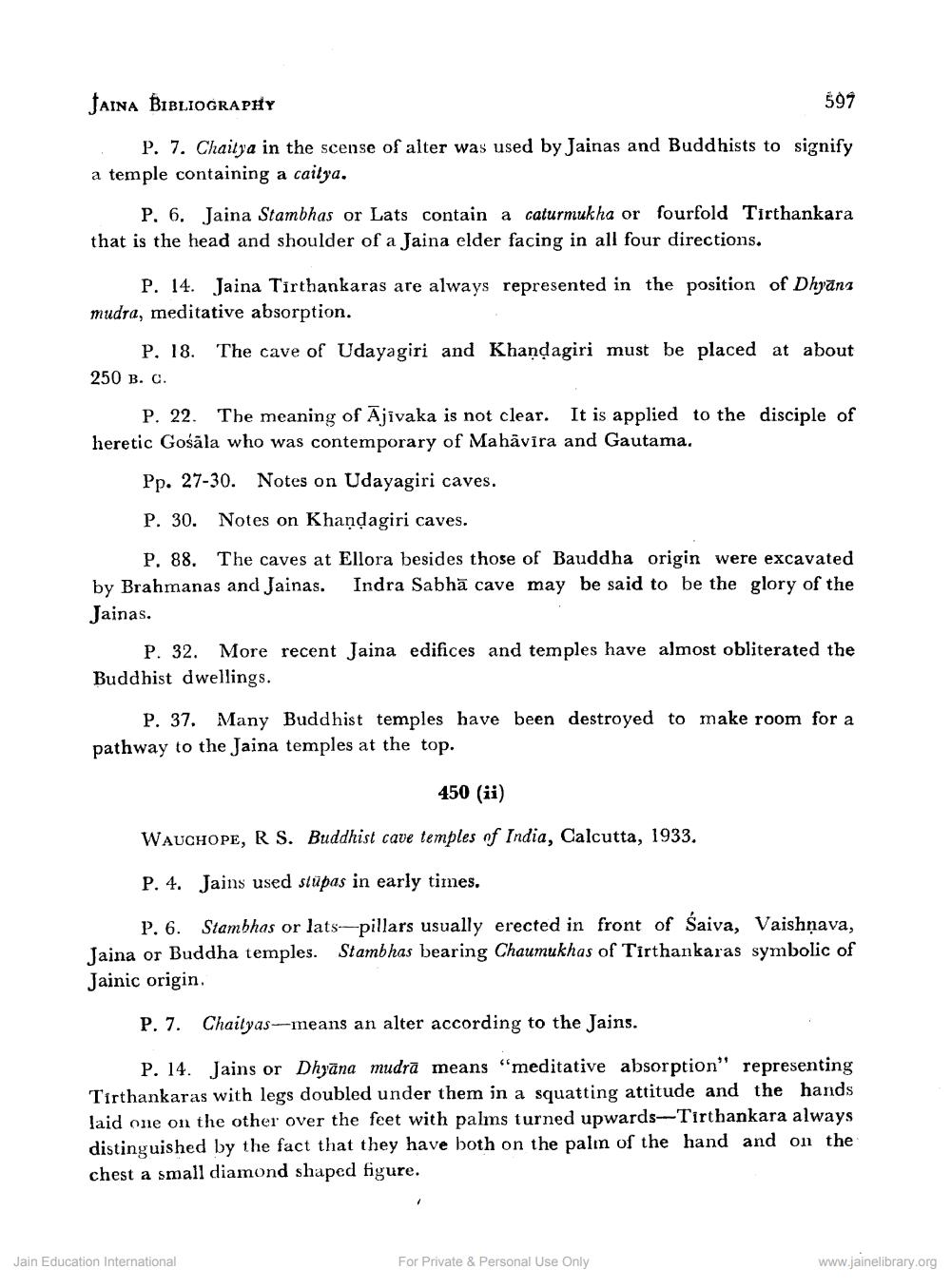________________
JAINA BIBLIOGRAPIY
597
P. 7. Chaitya in the scense of alter was used by Jainas and Buddhists to signify a temple containing a caitya.
P. 6. Jaina Stambhas or Lats contain a caturmukha or fourfold Tirthankara that is the head and shoulder of a Jaina elder facing in all four directions.
P. 14. Jaina Tirthankaras are always represented in the position of Dhyana mudra, meditative absorption.
P. 18. The cave of Udayagiri and Khandagiri must be placed at about 250 B. C.
P. 22. The meaning of Ājīvaka is not clear. It is applied to the disciple of heretic Gośāla who was contemporary of Mahavira and Gautama.
Pp. 27-30. Notes on Udayagiri caves.
P. 30. Notes on Khandagiri caves.
P. 88. The caves at Ellora besides those of Bauddha origin were excavated by Brahmanas and Jainas. Indra Sabha cave may be said to be the glory of the
Jainas.
P. 32. More recent Jaina edifices and temples have almost obliterated the Buddhist dwellings.
P. 37. Many Buddhist temples have been destroyed to make room for a pathway to the Jaina temples at the top.
450 (ii)
WAUCHOPE, R S. Buddhist cave temples of India, Calcutta, 1933.
P. 4. Jains used stupas in early times.
Stambhas or lats--pillars usually erected in front of Saiva, Vaishnava, Jaina or Buddha temples. Stambhas bearing Chaumukhas of Tirthankaras symbolic of Jainic origin.
Chaityas-means an alter according to the Jains.
P. 14. Jains or Dhyana mudra means "meditative absorption" representing Tirthankaras with legs doubled under them in a squatting attitude and the hands. laid one on the other over the feet with palms turned upwards-Tirthankara always distinguished by the fact that they have both on the palm of the hand and on the chest a small diamond shaped figure.
P. 7.
Jain Education International
For Private & Personal Use Only
www.jainelibrary.org




